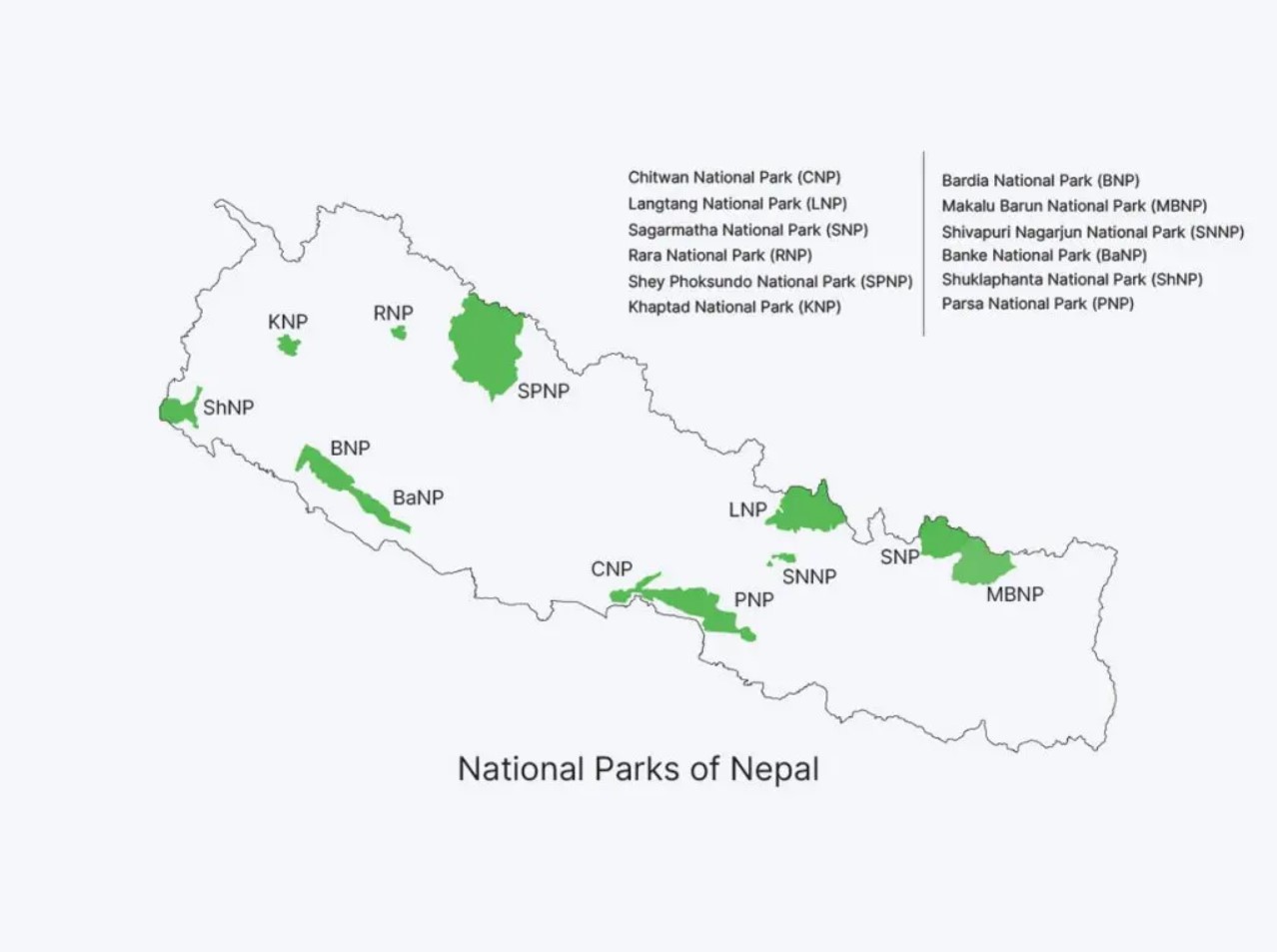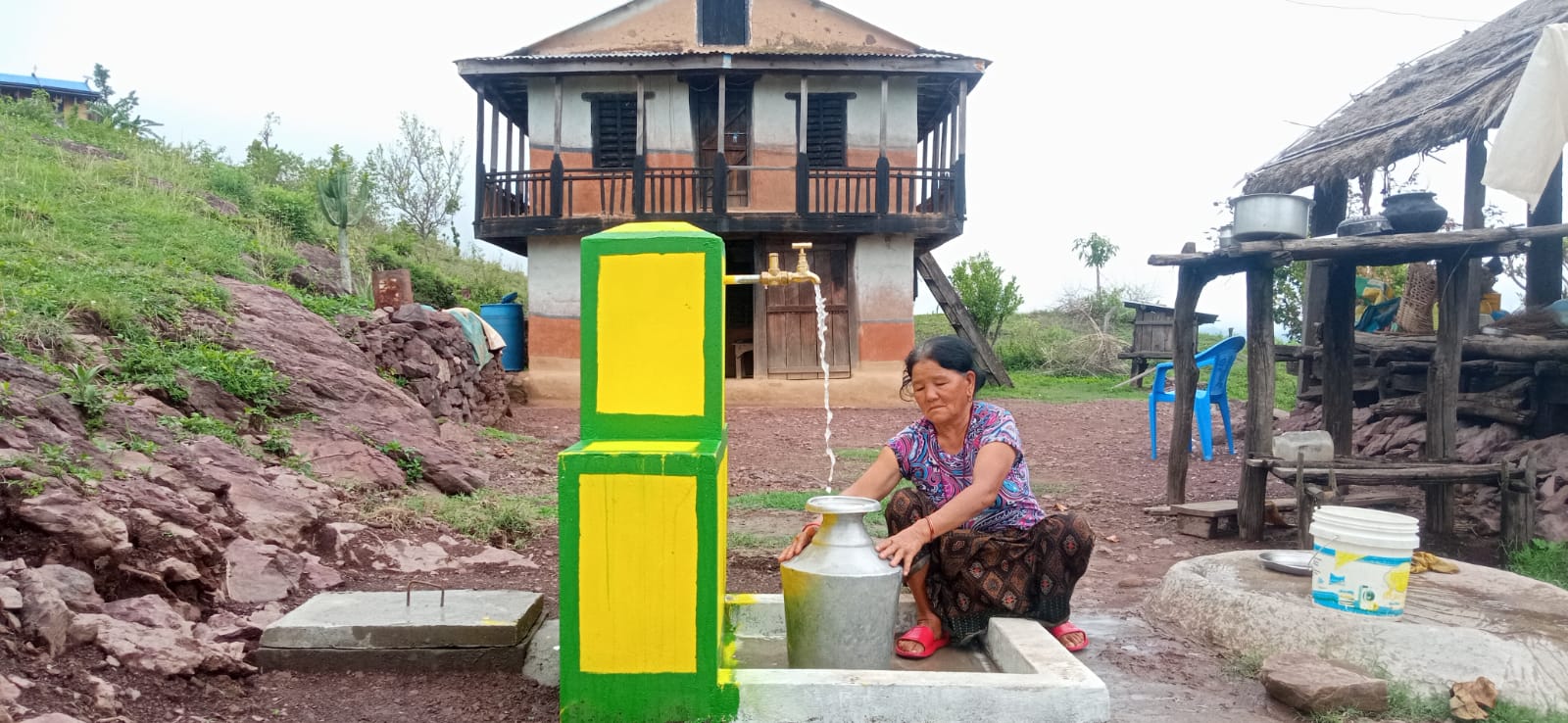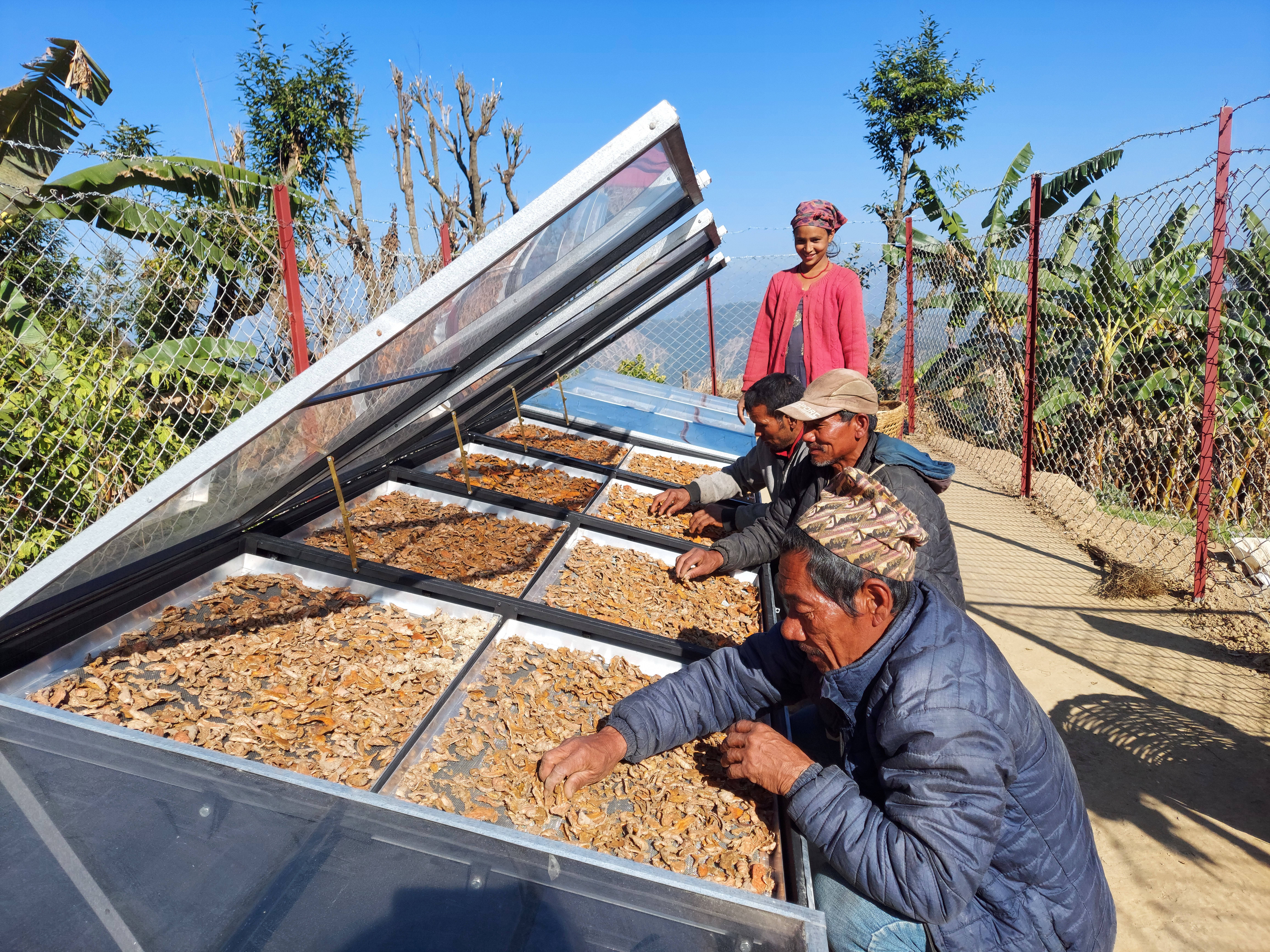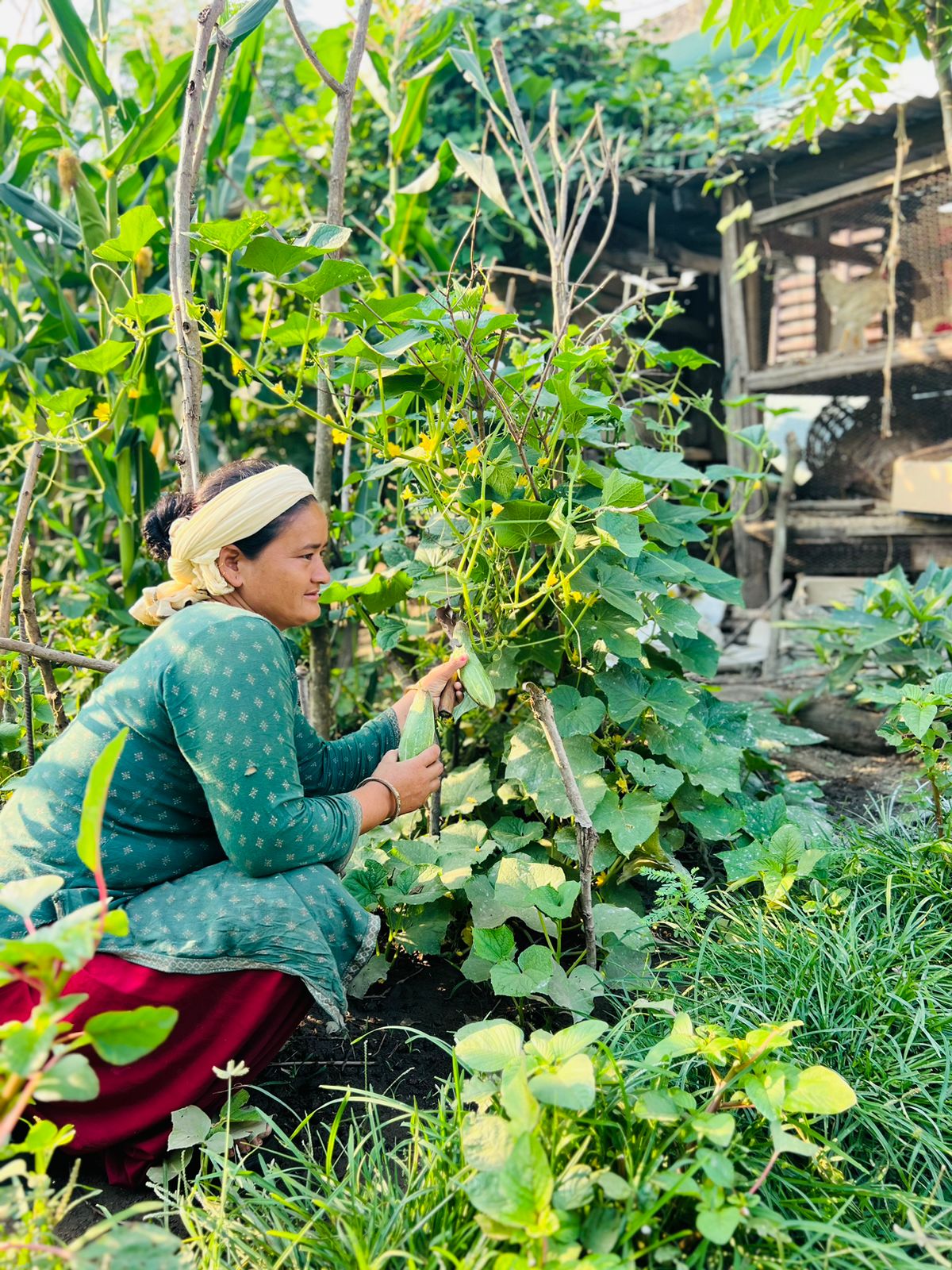Renewable Energy Access for Livelihoods in Fragile Buffer Zones (REALiZe)
Partner: Renewable World (RW)
2020-2024
Location: Northern buffer zones of the Bardia and Banke National Parks, Surkhet and Salyan districts of Karnali Province, Nepal
Project partner(s): The project was implemented by RW in collaboration with national NGO partner Local Initiatives for Biodiversity, Research and Development (LI-BIRD) and local NGO partners Beautiful Nepal Association (BNA) in Surkhet, and Dalit Development Society (DDS) in Salyan


Project aims
To enable 8,378 poor people living in northern Bardia and Banke National Park buffer zones in Nepal to generate a sustainable, renewable-energy-enhanced income, conserve the fragile forest landscape in which they live, and gain a louder voice in buffer zone decision-making.
Key Facts and Figures
6,643 people benefited from improved access to clean water, enhanced livelihoods, and participation in conservation and buffer zone decision-making
Education
An estimated 6,500 schoolchildren were reached through the introduction of a new curriculum.
Empowerment
56% of women reported an increased capacity to participate meaningfully in community and project activities.
Livelihoods
85 new businesses were initiated, and 170 businesses upgraded as a direct result of project interventions.
42 households reported and were reimbursed for livestock losses due to wildlife depredation.
What was the problem the project set out to address?
The Buffer Zones of Bardia National Park (established in 1989) and Banke National Park in Nepal are home to over 100,000 people. These parks are among Nepal’s most significant biodiversity hotspots, hosting an array of wildlife including tigers, sloths, and rhinoceroses, among others. However, the northern buffer zone, an ecologically fragile region, is home to communities facing significant challenges. Issues such as limited access to energy, clean water and sustainable livelihoods receive little attention in these areas.
In these areas the already degraded ecosystem has faced mismanagement, which as a result threatens both the environment and the well-being of these economically marginalised communities. Without urgent intervention, the harmful practices undertaken as coping strategies by the poorest may continue, leading to the further collapse of these critical biodiversity hotspots.
Additionally, the effects of climate change, particularly unpredictable rainfall, has exacerbated the situation. The resulting strain has triggered a mass out-migration of men seeking employment, leaving behind women, children, and the elderly to manage the deteriorating landscape on their own.
What did the project do to address this?
For the past four years, Jersey Overseas Aid partnered with RW to address these challenges by targeting over 8,000 individuals living in the northern buffer zone. The project focused on three key areas:
- The creation of reliable income opportunities for local communities
- Regenerating the fragile forest landscape
- Empowering marginalised communities to have a stronger voice in decision-making processes related to the buffer zone management
Activities and Outcomes
Outcome 1
Inclusive buffer zone governance structures and mechanisms are strengthened in three community clusters, underpinned by a new lower secondary school curriculum that empowers young people to demand environmentally responsible development
Education:
In Partnership with Kalimati Rural Municipality in Salyan a new lower secondary school curriculum has been developed covering subjects of climate change, renewable energy and conservation. This not only empowers youth to advocate for, but importantly, undertake environmentally sustainable activities in and around their communities in years to come, ensuring that conservation practices are sustained through future generations. A total of 86 teachers from 56 schools have been trained on the new curriculum, supported by reference materials to enrich the teaching and learning experience. Challenges exist in effectively integrating these topics into standard curriculum, and ongoing support from local governments will be crucial for the successful and widespread implementation in the future.
Outcome 2
Sustainable, renewable-energy-driven access to and conservation of scarce water resources is achieved for targeted communities living in buffer zone communities
Clean energy for Water:
The project has installed solar-powered water-lifting systems and upgraded old gravity water systems in order to significantly cut down the time it takes to collect water, benefiting over 2,700 people. To help strengthen the sustainability of this precious resource, efforts are also being made to protect water sources through conservation measures implemented through Water User Committees (WUCs).
Access to reliable household water services increased dramatically, from 25.69% (2020) to 91.4% (2024). The time spent fetching water reduced from 4 hours per day to 20 minutes. This intervention proved to be one of the project's most impactful, freeing up time and energy for livelihood activities. Through innovative programming, household irrigation systems were introduced, enabling kitchen gardens that provided an additional source of income and improved nutrition through the cultivation of diverse, nutrient-rich crops.

Outcome 3
A responsible, forest-based livelihoods programme is implemented in three clusters of buffer zone communities, including controlled livestock rearing, improved cookstoves and non-timber forest product expansion, combined with forest conservation
Forest Management:
Characteristic of a Conservation Livelihood project, many of the project's areas of intervention were closely intertwined; not only did the project set out to improve the livelihoods of marginalised communities but also to restore degraded biodiversity, which in turn, managed responsibly, will sustain those livelihoods. To achieve this, RW implemented a range of interventions, from strengthening honey value chains to secure market recognition of quality and better prices for producers, to subsidies for the purchase of energy-efficient cookstoves and supporting the set up of plant nurseries.
Nurseries:
RW established two tree nurseries and upgraded another small nursery as small businesses, generating sustainable income and providing livestock fodder to support local farming needs. These nurseries also promoted the cultivation and sale of various Non-Timber Forest Products (NTFPs) such as fruits and spices, helping to diversify income streams and reduce dependence on natural resources.
Agricultural support packages were provided to 1,507 households, offering seed kits and training on sustainable practices like mulching, composting, and drip irrigation. A particularly successful aspect was integrating these seedling distributions with a greywater irrigation scheme (using household wastewater), resulting in highly productive kitchen gardens. The project prioritised lemon, ginger and turmeric in Lekhparajol cluster, and lemon, kidney beans and onions in the Ghuiyabari cluster because these alternative crops are suitable to the terrain and soil type, requiring less irrigation/water, and are less likely to be eaten by wildlife. To increase the shelf-life and saleability of the perishable goods grown, solar dryers and solar-powered combined mills were installed for communal use, thus allowing the households to preserve and process almost 100% of their harvest and significantly increase their income over a longer period.

Outcome 4
Three cooperatives, including at least one women-led cooperative, have the skills and resources to provide renewable-energy-enhanced value chain services and links to financial services for people in the buffer zone
Value Chain Development:
In this area, RW focused on building the financial, managerial, and technical capacities of three cooperatives, including a newly established women-led cooperative. By the project's end, this cooperative had grown to over 240 members, empowering local communities in Salyan.
A key achievement was the establishment of a collection centre, enabling farmers and producers to efficiently sell livestock, crops, and NTFPs. The cooperative also connected with a micro-finance and insurance company specialising in value chain support, strengthening its sustainability and resilience to economic shocks. This approach enhanced the cooperative’s capacity to support its members and foster local economic growth.
Challenges and lessons learned
Human-Wildlife Conflict:
RW highlighted the need for continuation to prioritise human-wildlife conflict mitigation in future initiatives. Approaches such as changing crop variants to those not attractive to intrusive wildlife, and the building of more secure goat sheds have been implemented, and has seen some positive results. To protect these communities and promote sustainable livestock production, increased investment in effective preventative measures—such as better fencing, community awareness programs, and wildlife deterrents—will be crucial.
Women's Inclusion and Leadership:
The project has placed a strong emphasis on women's inclusion and their active involvement in community decision-making and leadership roles. While notable progress has been made in establishing structures that promote women's participation, some deeply-rooted cultural norms continue to pose challenges to engagement with these structures. Achieving lasting systemic change within these communities will require sustained efforts. Continued work to address gender disparities and foster equitable leadership opportunities remains essential for long-term transformation.
Conclusion
Independent evaluation stated that "The project successfully achieved most of its intended targets, notably enhancing community capacities, promoting sustainable agricultural practices, supporting biodiversity conservation, and improving water management”.
REALiZe has succeeded in addressing both the needs of these remote marginalised communities with new sources of income and improved access to natural resources such as water, while introducing measures to strengthen the protection of the ecologically fragile surrounding area. All the while finding ways to continue implementing work in an exceptionally challenging context; from enabling productive community and national engagement with restrictive COVID lock-down measures in place, to finding ways to continue to work with monsoon conditions disrupting project site access.
‘Thanks to REALiZe project for reaching to a remote community like ours. We have water at our doorstep enough to feed our cattle and vegetables grown next to our kitchen, we are getting more return from goat rearing, we no longer spend a day for grinding our grains, and can preserve all our ginger/turmeric that we grow sweating hard in fields. With increased income options in the community, I could foresee more families returning to village’
Lok Bahadur Gharti, Sadhane


